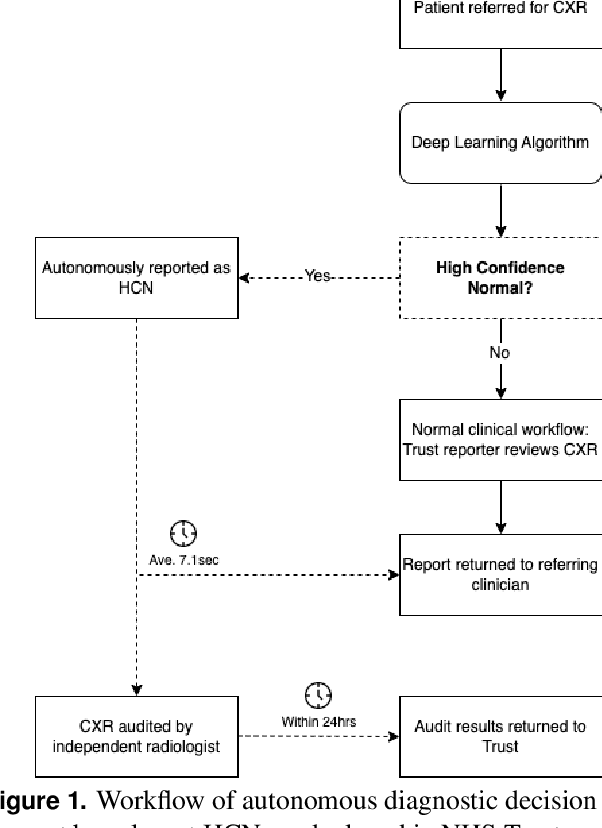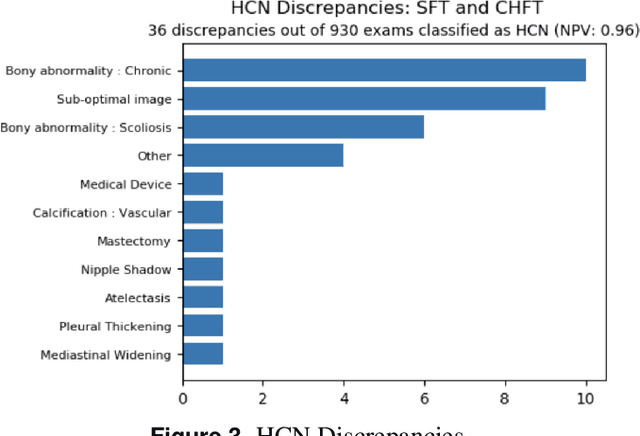Real-World Performance of Autonomously Reporting Normal Chest Radiographs in NHS Trusts Using a Deep-Learning Algorithm on the GP Pathway
Paper and Code
Jun 28, 2023



AIM To analyse the performance of a deep-learning (DL) algorithm currently deployed as diagnostic decision support software in two NHS Trusts used to identify normal chest x-rays in active clinical pathways. MATERIALS AND METHODS A DL algorithm has been deployed in Somerset NHS Foundation Trust (SFT) since December 2022, and at Calderdale & Huddersfield NHS Foundation Trust (CHFT) since March 2023. The algorithm was developed and trained prior to deployment, and is used to assign abnormality scores to each GP-requested chest x-ray (CXR). The algorithm classifies a subset of examinations with the lowest abnormality scores as High Confidence Normal (HCN), and displays this result to the Trust. This two-site study includes 4,654 CXR continuous examinations processed by the algorithm over a six-week period. RESULTS When classifying 20.0% of assessed examinations (930) as HCN, the model classified exams with a negative predictive value (NPV) of 0.96. There were 0.77% of examinations (36) classified incorrectly as HCN, with none of the abnormalities considered clinically significant by auditing radiologists. The DL software maintained fast levels of service to clinicians, with results returned to Trusts in a mean time of 7.1 seconds. CONCLUSION The DL algorithm performs with a low rate of error and is highly effective as an automated diagnostic decision support tool, used to autonomously report a subset of CXRs as normal with high confidence. Removing 20% of all CXRs reduces workload for reporters and allows radiology departments to focus resources elsewhere.
 Add to Chrome
Add to Chrome Add to Firefox
Add to Firefox Add to Edge
Add to Edge